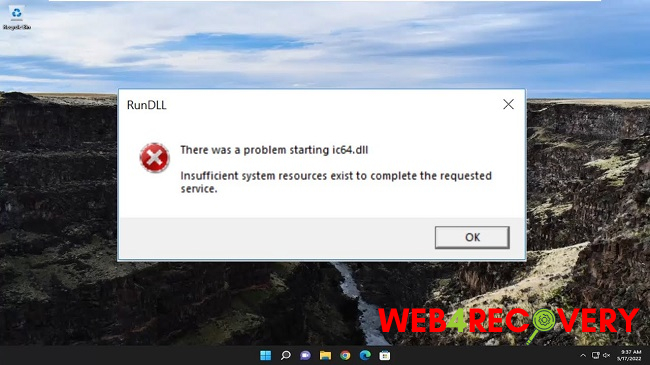Encountering the “This device cannot start. (Code 10): Insufficient system resources exist to complete the API” error message can be frustrating, especially when it affects the functionality of your hardware devices.
This error typically indicates an issue with outdated or incompatible device drivers.
In this article, we will explore the causes behind this error, discuss the importance of keeping device drivers up to date, and provide five effective methods to fix the “Code 10” error and restore proper device functionality.

Understanding the “Code 10” Error: Insufficient System Resources
The “Code 10” error message is a Device Manager error that occurs when a hardware device is unable to start due to insufficient system resources to complete the API (Application Programming Interface).
This error commonly appears in Windows operating systems and can affect various devices such as network adapters, sound cards, USB devices, and more.
Importance of Updating Device Drivers
Outdated or incompatible device drivers are a common cause of the “Code 10” error. Device drivers serve as a bridge between your hardware devices and the operating system, facilitating their proper functioning.
Regularly updating these drivers is essential to ensure compatibility, performance improvements, and bug fixes.
Methods to Fix the “Code 10” Error
Here are five effective methods to resolve the “Code 10” error caused by outdated or incompatible device drivers:
Method 1: Update Device Drivers Manually
- Identify the Problem Device: Open the Device Manager and locate the device displaying the “Code 10” error.
- Access Device Properties: Right-click on the problematic device and select “Properties”. Navigate to the “Driver” tab.
- Update the Driver: Click on the “Update Driver” button and choose to update the driver manually. Provide the location of the updated driver software or let Windows search for it automatically.
- Restart Your Computer: After updating the driver, restart your computer to apply the changes.
Method 2: Use Windows Update to Update Drivers
- Open Windows Update: Go to the Windows Start menu, type “Windows Update”, and select it from the search results.
- Check for Updates: Click on “Check for updates” and allow Windows to scan and download any available driver updates.
- Install Updates: If any driver updates are found, click on “Install updates” to update the drivers automatically.
- Restart Your Computer: After the updates are installed, restart your computer to complete the process.
Method 3: Use Device Manufacturer’s Website
- Identify the Manufacturer: Determine the manufacturer of the problematic device.
- Visit Manufacturer’s Website: Go to the manufacturer’s website and locate the “Support” or “Drivers” section.
- Find the Device Driver: Search for the appropriate device driver for your specific hardware model and download it from the website.
- Install the Driver: Once downloaded, run the driver installation file and follow the on-screen instructions to install the updated driver.
Method 4: Uninstall and Reinstall the Device Driver
- Open Device Manager: Access the Device Manager by right-clicking on the Windows Start button and selecting “Device Manager”.
- Uninstall the Device: Locate the problematic device, right-click on it, and select “Uninstall device”. Confirm the uninstallation.
- Restart Your Computer: After uninstalling the driver, restart your computer.
- Reinstall the Driver: Upon restart, Windows will attempt to reinstall the driver automatically. If it fails, follow Method 1 or Method 3 to manually update or reinstall the driver.
Method 5: Use Driver Update Software
- Download and Install Driver Update Software: Use reputable driver update software such as Driver Booster, Driver Easy, or Snappy Driver Installer. Download and install the software on your computer.
- Scan for Outdated Drivers: Launch the driver update software and initiate a scan for outdated drivers. The software will identify any drivers that need updating.
- Update Drivers: Review the scan results and select the option to update the outdated drivers. The software will automatically download and install the latest versions of the drivers.
- Restart Your Computer: After updating the drivers, restart your computer to apply the changes.
Conclusion
Encountering the “This device cannot start. (Code 10): Insufficient system resources exist to complete the API” error can be frustrating, but it is often solvable by addressing outdated or incompatible device drivers.
Keeping your device drivers up to date is crucial for the proper functioning of your hardware devices and overall system stability.
By following the five methods outlined in this article, you can effectively resolve the “Code 10” error and restore full functionality to your hardware devices.
Remember to regularly check for driver updates and perform maintenance to ensure a smooth and efficient computing experience.

















